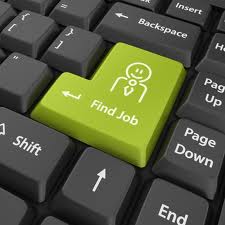

Job sharing is one way to get work hours flexibility, especially if you need it because of child care or elderly parent responsibilities. My mom did job sharing when I was young. She worked Monday, Tuesday and Wednesday morning, and her co-worker worked Wednesday afternoon, Thursday and Friday. Both loved the arrangement and through careful planning, this went on for 15+ years.
Sharing a job with another person requires flexibility and good communication skills to keep the work flowing even on the days when you are not at work. This goes beyond good face-to-face communication skills as you have to be able to communicate with the other worker when you are not working at the same time. Email is one type of communication that helps in a job share situation. Being flexible and able to accept phone calls on non-work time is also helpful.
Good documentation skills are critical to job sharing. This ensures that the work gets done properly with no mistakes even when you are not there yourself. One example of documentation skills is medical charting for doctors and nurses. The next doctor or nurse should be able to tell what treatment a patient has received and what he will need next. My mom and her co-worker had ‘in’ and ‘out’ boxes so they knew what the other was working on. They also had lots of sticky notes (this was all that was available 30 years ago!).
Neatness counts. If you share supplies or equipment, they need to be checked on a regular basis to ensure that you do not run out of anything critical or misplace a needed piece of equipment. Return all equipment to its storage place. Also check for breakage and let the other job sharer know if something is broken so that this person does not try to use it until it is fixed.
Job sharing adds critical thinking and planning skill sets to your resume. It also adds documentation skills and communication skills. All of these skills are a bonus, so make sure you indicate on your resume under Work Experience that a position you held was a job share. You can list the position then put in parentheses: (job share, 30 hours per week).


Instead of just sending out a generic resume, today’s job candidates need to take the time to tailor their resume to fit every job being applied for. While this may make the application process take longer, it will be well worth the effort in the long run. Here are a few tips to tailor your resume and help make the application process go faster:
Keep the information on your resume up to date. Just got a new cell phone? Change the contact information right away. It is easy to forget to change such a small thing, but you shouldn’t wait until you’re applying for a new job. An out-of-date phone number can have big, negative consequence (such as not being contacted for your dream job).
Read the job qualifications and duties carefully. Add the same keywords to your resume so that it will make it through the recruiter’s software scanner.
Use separate resumes for experience in different industries or a functional resume for two or more closely related industries. It makes it easier to add crucial keywords to your resume when tailoring it to a specific position.
Learn to be a cut and paste, toggle expert. Not all job application databases will let you upload a resume into different information fields. Become familiar with Control+C and Control+V to copy and paste. PCs use the Alt+Tab keys and Macs use the Apple+Tab keys to toggle between screens. Copy text from your resume first, then toggle to the job application page and paste the text into the information boxes.
Name your resumes generically and modify the name each time you upload it to an application database. For example, label your updated resume “Edit512” for the industry it addresses and the date you updated it. Do not name your resume with a company name. It is too easy to upload your Xerox resume for an IBM position, and forgetting to change the name will count against you as a job candidate.
Following these easy tips will help you to be more prepared for your job search.


Employers like to hire people who keep their skills up to date. The best way to do this is to become a life-long learner. The Education resume section shouldn’t just begin and end with your university degrees. Keep on learning. Take classes, view webinars, participate in association chat and conference sessions, anything that will increase your knowledge and expertise in life and your job.
There are a variety of places to look for life-long learning opportunities. You can start with Continuing Education through your professional association or college. Many PBS television stations carry some form of adult learning classes. Take the seminars that are offered through your job. Checkout online videos or webinars that showcase college lectures. Search for higher education institutions that allow you to take online classes. Some classes are free while others have a charge for earning credit. Scan your local paper for museums, institutes and other public places that offer classes. Classes for credit are good because you are tested and held accountable to learn what is being taught. But even classes that do not offer credit or that are not taken for credit will still add to your skill sets and knowledge base.
These learning opportunities make you more valuable to employers. Employers are so interested in finding life-long learners as employees that some companies will offer educational opportunities to their employees on a regular basis. It may be in the form of company-sponsored computer classes, tuition reimbursement or even professional conferences. While you may be required to make a presentation on what you learned when you return from a conference, the knowledge gained and the increased skill sets on your resume may be worth it.


The facts on your resume may get you an interview and even a job offer, but even these facts must still be verified before you start a new job. You should keep legitimate documents that back up the information on your resume. Some of these documents include:
College and High School Diplomas: Degrees are being checked with regular frequency before a job offer is finalized due to the fact that many people lie about their education credentials on their resumes. Diplomas are also a good way to verify education when a school no longer exists.
W-2/W-4 Tax Documents: The W-2 tax form is issued by your employer. It is an official record of taxes on the state and federal level that were taken from your paycheck. As such, it is also an official record of which company you were employed by. If a company fails to respond to background check inquiries, at least you have one legal document that shows you worked there. The W-4, which lists your tax exemptions may work as well.
Job Offer Letters: If you receive a verbal offer, either in person or over the telephone, you should also request that the offer be put into writing on the company’s letterhead. You then have an official document that at least illustrates the job offer and proposed starting date.
Most of these documents may be hard to get your hands on, especially if you were not thinking about education and employment verifications needed for future employment. Pay stubs, however, should be relatively easy to keep and pull out if you need them. They serve two purposes: to verify employment and wages. Wage verification may be needed to negotiate a higher salary rate at your next job.


Seasonal Jobs
Head to your local garden centers, greenhouses, and home improvement stores. Many of these retailers hire extra help during the summer as more people are busy with remodeling and home improvement projects during the warm summer months. You could also check out your local government agencies, as they also hire students to help with extra lawn work during the summer. If you enjoy working with children, there are always parents looking for childcare while their kids are out of school for the summer, or you could look into opportunities at local youth camps.
Application/Interview Etiquette
Even if you are only putting in an application, dress professionally. If you are offered an interview on the spot, you want the hiring manager to focus on your qualifications and work ethic, not your short shorts or ripped jeans. Carry your resume and reference information with you to make the application process go faster, as well to show that you’re prepared in the event the employer asks for a resume.
Digital Dirt
Don’t think that because you’re only seeking summer employment that a hiring manager may not “Google” you or look you up on Facebook. If your status updates or tweets are filled with profanity and/or pictures of your weekend escapades, the hiring manager may decide right then and there that you are not the type of person who would be a responsible employee. Clean up your digital dirt before you start applying for jobs and remove inappropriate posts/comments from friends who have access to your online profiles. Finally, make sure you have a professional greeting on your voice mail. An employer doesn’t want to hear “This is Joe – hit me up” when they need to leave a message for you. Simply state your name and confirm your phone number in your voice mail so that the employer knows they have the right person.
With a little bit of patience, hard work, and perseverance, you will surely land that coveted summer job.
Resumes and Portfolios
Resume Writing

Certain art and design careers such as graphic design, automotive design or illustration may require a portfolio. The portfolio, whether online or a physical book, gives interested viewers an idea of the artist’s or designer’s skills. This does not mean, however, that a resume is not needed. The resume gives a potential employer an idea of how this person’s professional career has played out so far. It may list apprenticeships, internships and jobs that the artist or designer performed to enhance his or her natural skills. The resume illustrates experience while the portfolio illustrates talent and how it has developed.
Artists and designers have found clever ways to integrate their resumes within their portfolios, or to add them as extra print to mini portfolios or smalls, the small postcards given away to potential employers by artists and designers. Although it may seem expensive to produce postcards with a designer’s work on one side and his resume on the other, it is still cheaper to do so than to produce mini portfolios of his work. The smalls are given away at design shows and exhibitions that are open to the public, including potential employers.
Resumes that list a designer’s positions and past experience are often mounted inside a regular-sized portfolio or minimized to fit into a mini portfolio. Some designers such as graphic designers have included their resumes inside a piece of their portfolio work. The resume is turned into a work of art as well as an informative document, all in one piece.
Contract and Freelance Resumes – How to Highlight Your Employment History
Executive ResumesJob SearchNetworkingProfessional ResumesResume KeywordsResume Writing

If you have worked full-time for only one employer at a time, the Employment History section of your resume is going to be pretty standard. You list the names and locations of the companies you’ve worked for, your job titles, and a description of your duties. It is pretty straightforward to write and easy for a recruiter or hiring manager to see your career progress.
However, writing your employment history when you’ve been contracting and freelancing is a bit different from full-time, permanent employment and can be tricky. If you are a contractor through an employment agency, while you may work at Company X, you are actually an employee of that employment agency. Some contracts specify that you cannot list Company X on your resume, which means you must list the employment agency and a description of your duties that also describes the company. So, for example, if Company X is a software design company, you may list one of your duties as software testing for a software design firm without specifying Company X. Other contracts may allow you to list “Company X contract through ABC Employment agency.”
Freelancers often compile the Employment History section of their resumes by listing a title such as “Freelance Website Designer”, the dates during which they have been freelancing, and something along the lines of: “Client list includes: Companies A, B, and C. However, you must be careful. If your freelance agreement specifies that you cannot list an individual company for which you have done web design, then don’t do it. Also, do not misrepresent your work and state on your resume in separate entries that you worked at each company as a web designer. Listing the companies this way can be construed as you were a full-time employee when you really were a freelancer. You must make it clear that it was freelance work and not ongoing work.
Before you start writing, know what your contract and freelance agreements allow/do not allow you to publicize on your resume. If you’re really struggling with the format and word choice, consult with a professional resume writer who is skilled in creating resumes for contract/freelance clients.


Even in a strong economy, starting out on the job search is never easy. In a down economy, it can be even harder. However, there are plenty of things you can be doing to get your job search started off on the right foot.
Your Resume
Your resume is the first impression you give an employer. The content, format and style should be created in a manner that represents the value and expertise you offer, as well as appealing enough to stand above the stack of resumes the employer will be receiving for the open position. If you aren’t comfortable writing your own resume, consider consulting a professional writing service to help you out. Professional writers are trained to create individualized resumes that generate interviews.
Networking
Research professional organizations within your industry. Many have jobs posted on their sites, as well as have details of upcoming job fairs and other networking events. If you know of friends or colleagues involved in any of the organizations you’re interested in, contact them to see if it would benefit you to join as well.
Interview Prep
Start now preparing for future interviews. While your parents and friends may give you interview tips, they won’t be there holding your hand during the interview-you need to be ableto dazzle an employer on your own! Have 1-2 outfits readily available for interviews, as well as copies of your resume prepared to take with you. Read blogs and books that offer interview advice and if you have time, always research the company before you head into the interview. Being able to speak the company language will show the hiring manager you are serious about joining their team.
